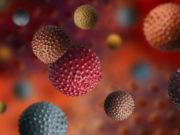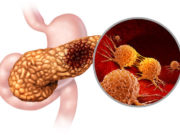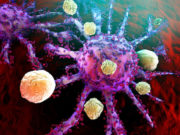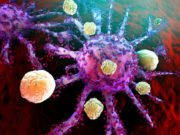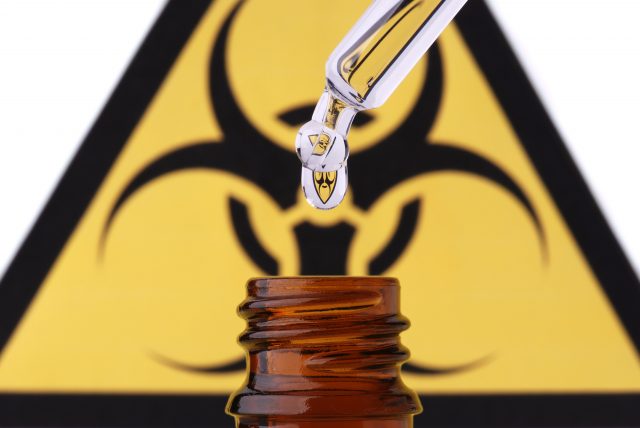The aftermath of the wildfires in California has left more than just ashes, dust, and homeless people. Local residents also face environmental hazards caused by the common, toxic-laden, household items that burned alongside the buildings. Although homes are supposed to be “safe havens,” most of them are unfortunately filled with toxic chemicals linked to a host of health problems, including cancer, autism, developmental defects, and reproductive issues.
It’s not just California fire-victim residents who are in danger. Homeowners across the country are surrounded by harmful chemicals like phthalates, flame retardants, and perfluorinated chemicals (PFCs) on a daily basis. According to Dr. Leonardo Trasande, professor at NYU, studies show that the synthetic chemicals lurking in the home are major risk factors in the development of diseases and disabilities.
Trasande, who is an expert in pediatrics and environmental health, says that children in particular are at the greatest risk. Their bodies are still developing, which means they have less of an immunity to environmental toxins. Not to mention, they’re also smaller, which means that even a little exposure can be detrimental.
The Top 4 Toxic Household Chemicals
Dr. Trasande came up with a list of the household chemicals that he says are the most toxic, along with where you can find them and how you can eliminate them.
1. Pesticides
Pesticides are typically found in foods like vegetables, potatoes, and milk, as well as in your lawn outside. According to the Environmental Working Group (EWG), harmful amounts of weed-killer can be found in Cheerios and Quaker Oats products.

The link between pesticides and human diseases like cancer is still being investigated, but certain studies show that exposure to pesticides can cause leukemia or non-Hodgkins lymphoma. They’ve also been shown to cause autism and attention deficit hyperactivity disorder (ADHD) in infants, children, and young teenagers.
In order to limit your exposure to harmful pesticides, for starters, it’s best to avoid spraying them in your backyard. You should also switch to organic foods whenever possible, but it’s important to note that even organic produce can be sprayed with pesticides.
2. Phthalates
Phthalates help to make plastic flexible. Thankfully, phthalates were banned from toys and children’s products in 2008. They are still used in manufacturing, though. They can be found in vinyl flooring, shower curtains, detergents, nail polish, hair sprays, shampoos, perfumes, and other cosmetic products.
Phthalates are linked with many reproductive issues, such as infertility and endometriosis. Other studies have also shown them to be associated with obesity, ADHD, asthma, diabetes, and breast cancer.
To avoid contact with phthalates, you have to cleanse your home of many products. Since this can be overwhelming, it’s best to start slowly. Eliminating products as you finish them is the best way to go about it. Any product that has “recycling-code-3” on its label or contains “fragrance” might also contain phthalates.
3. Bisphenol A (BPA)
BPA can be found in plastics and food packaging, as well as in paper items and aluminum cans. Many scientists have discovered a connection between BPA and obesity, as well as coronary artery disease, high blood pressure, and female reproductive issues. The FDA has deemed BPA safe for humans, but this claim has been challenged by many researchers.
Replacing your plastic containers and water bottles with those made from glass or stainless steel is a great first step in limiting your exposure to BPA. You should also avoid microwaving plastic and cut back on canned foods.
4. Flame Retardants
Flame retardants are chemicals that help to make products like electronics, clothing, furniture, carpets, and building materials less flammable. Several states have limited or banned flame retardants from being used in certain products. Unfortunately, the harmful chemicals can still be found in the air, as well as in water, soil, and dust.
Flame retardants have been shown to contribute to thyroid cancer, ADHD, and slow brain development. They also might have a negative affect on children’s IQ levels and could potentially cause asthma and allergies.
The more you vacuum and mop your home, the more you can rid it of flame retardant residue. It’s also best to avoid mattresses and toys that contain polyurethane foam.
The Bottom Line
Unfortunately, the U.S. Environmental Protection Agency (EPA) has not been able to keep up with the scientific studies that reveal the harmful effects of household chemicals. Even after studies have shown that there are more than 80,000 of these toxins lingering in U.S. products, they’ve still only banned a small amount.
It’s best not to rely solely on the EPA, as Trasande describes their evaluation techniques as “oversimplified” and “limited on a number of levels.” Scientists have proven that exposure to these harmful chemicals are certainly linked with many harmful diseases, including cancer. Protect yourself and your family by making small changes that eliminate these toxins from your living environment.











